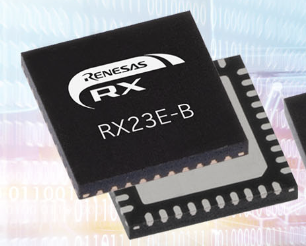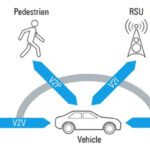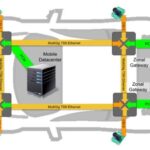 Renesas Electronics Corporation has expanded its 32-bit microcontroller (MCU) offering with a new RX device for high-end industrial sensor systems. The latest addition, the RX23E-B, is a 32-bit device from its popular RX Family featuring a high-precision analog front end (AFE), specifically designed for systems that demand fast and accurate analog signal measurements.
Renesas Electronics Corporation has expanded its 32-bit microcontroller (MCU) offering with a new RX device for high-end industrial sensor systems. The latest addition, the RX23E-B, is a 32-bit device from its popular RX Family featuring a high-precision analog front end (AFE), specifically designed for systems that demand fast and accurate analog signal measurements.The new MCU integrates a 24-bit Delta-Sigma A/D converter capable of achieving a conversion speed of up to 125 kSPS (125,000 samples/second) — eight times faster than the existing RX23E-A. It can process accurate A/D conversion while reducing RMS noise to 1/3 (0.18µVrms @1kSPS) when compared to the RX23E-A. The RX23E-B facilitates faster and more precise measurements of critical parameters such as strain, temperature, pressure, flow rate, current, and voltage, making it ideal for high-end sensor devices, measuring instruments, and test equipment. In particular, the RX23E-B offers sufficient performance to drive force sensors used in industrial robots, which often demand measurements as fast as 10 µsec (100,000 samples/second). The MCU also reduces overall system size and the component count by incorporating the AFE and the MCU on a single chip.
Similar to the RX23E-A, the RX23E-B incorporates a 32-MHz RXv2-based CPU with digital signal processing (DSP) instructions and a floating point unit (FPU) and combines the AFE into a single chip using the same fabrication process. It offers new peripheral functions such as a 16-bit D/A converter, which enables measurement adjustments, self-diagnosis, and analog signal output. The device’s +/-10V analog input enables +/-10V measurement with a 5V power supply without requiring external components or additional power supply. An LCD controller with a maximum of 40 SEG x 4 COM and a real-time clock (RTC) function are also included.
In large-scale instruments that need to control and take measurements of multiple targets such as robot arms, and gas and liquid analyzers, there has been a significant demand for distributed processing architecture. In distributed processing design, instead of relying on a dedicated MCU to manage all functions, each function can operate as a separate module, responsible for tasks such as motor control, sensor measurement, and temperature control. This modular approach allows for independent development, offers greater design flexibility, and simplifies maintenance. As each module needs an MCU for calculations, engineers can develop sensor modules more easily using an MCU with a built-in AFE, than combining a discrete AFE chip and a separate MCU.
The RX23E-B offers a version that supports an A/D conversion data rate of up to 125 kSPS, and a version that supports up to 31.25 kSPS. Both products offer flexible data rate settings ranging from 3.8 SPS to the maximum value, allowing users to choose the best balance between data rate and noise for their specific system requirements. The products are available in a 5.5 mm square 100-pin BGA package and a 6 mm square 40-pin QFN package for compact applications, as well as wide pin packages ranging from 48- to 100-pin options.
Renesas has combined the new RX23E-B MCU, designed for precise pressure measurement and control, with intelligent power devices tasked with driving solenoid valves, to develop the high-speedPressure Control Solution. The integrated high-precision AFE provides precise pressure control and minimizes the component count for the design which reduces the BOM costs and board mounting area. These Winning Combinations are technically vetted system architectures from mutually compatible devices that work together seamlessly to bring an optimized, low-risk design for faster time to market. Renesas offers more than 400 Winning Combinations with a wide range of products from the Renesas portfolio to enable customers to speed up the design process and bring their products to market more quickly.
The RX23E-B is available now, along with a Renesas Solution Starter Kit for RX23E-B. Using this kit, engineers can evaluate the operation and functionality of the AFE and signal conversion without the need for software development.






Leave a Reply